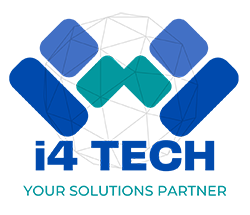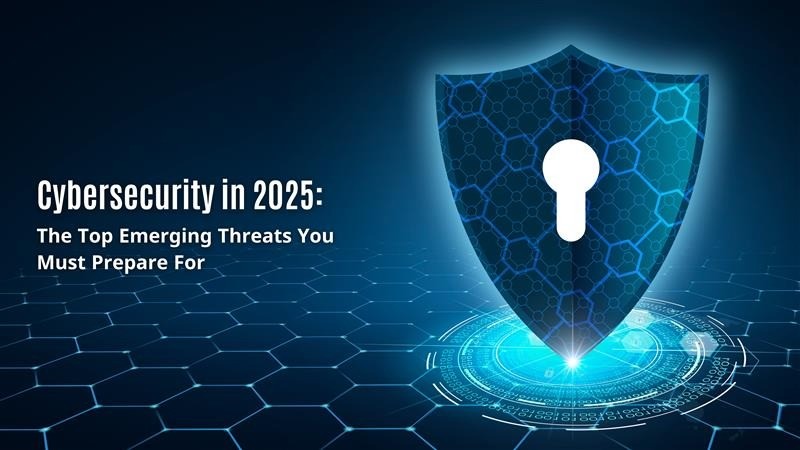Cybersecurity for Developers: 2025 Threats and Prevention Strategies
As we step into 2025, cybersecurity remains one of the most critical concerns for developers. With the rapid evolution of technology, cyber threats have become more sophisticated and harder to detect. Developers, being at the heart of building applications, must take a proactive role in securing their code and systems. This year, cybersecurity is not just the responsibility of IT departments but must be woven into the fabric of every developer’s workflow.
In this article, we will explore the emerging cybersecurity threats developers face in 2025 and the strategies to prevent them to ensure secure, resilient applications.
⚔️ Emerging Cybersecurity Threats in 2025
1. AI-Powered Cyber Attacks
AI is not only revolutionizing development but is also a powerful tool for attackers. AI-powered cyber attacks can:
- Automate phishing campaigns to target large numbers of users.
- Use machine learning to exploit system vulnerabilities.
- Conduct advanced social engineering attacks, making malicious content harder to detect.
2. Supply Chain Attacks
In 2025, supply chain attacks continue to be a growing threat. Attackers target software libraries, third-party services, and open-source packages, which are often integrated into applications. By compromising these components, hackers can infiltrate the broader system.
3. Zero-Day Vulnerabilities
Zero-day vulnerabilities—flaws that are unknown to the developer and have no existing patch—remain a major concern. These vulnerabilities are often exploited in sophisticated cyberattacks, and developers must be vigilant about securing their code from such attacks.
4. API Exploits
APIs are integral to modern applications, but they are often a prime target for attackers. In 2025, API security will be more important than ever. Weak authentication, improper input validation, and lack of encryption can lead to significant security breaches.
5. Ransomware Attacks
Ransomware attacks are evolving in 2025, with hackers using increasingly sophisticated techniques to lock applications and systems and demand ransom. With the rise of cryptocurrency, the anonymity of these attacks is enhanced, making them harder to trace.
🛡️ Prevention Strategies for Developers
1. Secure Coding Practices
The foundation of good cybersecurity starts with secure coding. Developers should:
- Use parameterized queries to prevent SQL injection attacks.
- Always validate user input to avoid malicious inputs.
- Implement input sanitization and output encoding to protect against cross-site scripting (XSS) and other attacks.
- Follow principle of least privilege to limit user permissions and restrict access to sensitive data.
2. AI and ML for Enhanced Security
To fight AI-powered threats, developers can use artificial intelligence and machine learning to detect suspicious activity, automate responses, and predict potential vulnerabilities. AI-driven tools can also help in identifying patterns and anomalies in network traffic that may indicate an attack.
3. Regular Security Audits and Code Reviews
Conduct regular security audits and code reviews to identify vulnerabilities before attackers exploit them. Automated static and dynamic analysis tools can scan the codebase for potential security flaws, helping developers fix issues early in the development cycle.
4. Encryption and Secure APIs
In 2025, encryption is a must. Encrypt sensitive data in transit and at rest to protect user information. Implementing secure APIs with robust authentication methods, such as OAuth 2.0 and API keys, will help prevent unauthorized access.
5. Adopt Secure DevOps Practices (DevSecOps)
Integrating security into the DevOps pipeline (DevSecOps) ensures that security is considered at every stage of the development lifecycle, from planning and coding to testing and deployment. Automated security checks, vulnerability assessments, and penetration testing should be part of the regular CI/CD pipeline.
6. User Authentication and Authorization
Use multi-factor authentication (MFA) and strong password policies to secure applications and ensure that only authorized users have access. Implement role-based access control (RBAC) to restrict access to sensitive data.
7. Education and Awareness
Developers must stay informed about the latest threats and best practices. Participating in security training programs and collaborating with security experts will empower developers to better understand vulnerabilities and secure their applications.
🌐 Future-Proofing Your Development Against Cyber Threats
As the world of cybersecurity continues to evolve, developers must remain proactive in their approach. By adopting secure coding practices, integrating security measures into the development lifecycle, and staying up-to-date with emerging threats, developers can play a critical role in safeguarding applications and data.
💼 How i4 Tech Integrated Services Supports Secure Development
At i4 Tech Integrated Services, we prioritize security at every step of the development process. Our experts help clients build resilient and secure applications by:
- Implementing industry best practices in secure coding
- Ensuring thorough vulnerability assessments and penetration testing
- Providing guidance on security tools and technologies
We empower businesses to meet cybersecurity challenges head-on, keeping applications and data safe from evolving threats.


